A Neko-Main Deck Choice?
In 2011, decks that Synchro Summoned extensively dominated the format as they were very consistent. Dino Rabbit was also a very good choice this format. But in the background, another deck was waiting for its chance in the spotlight.
A Slow Start
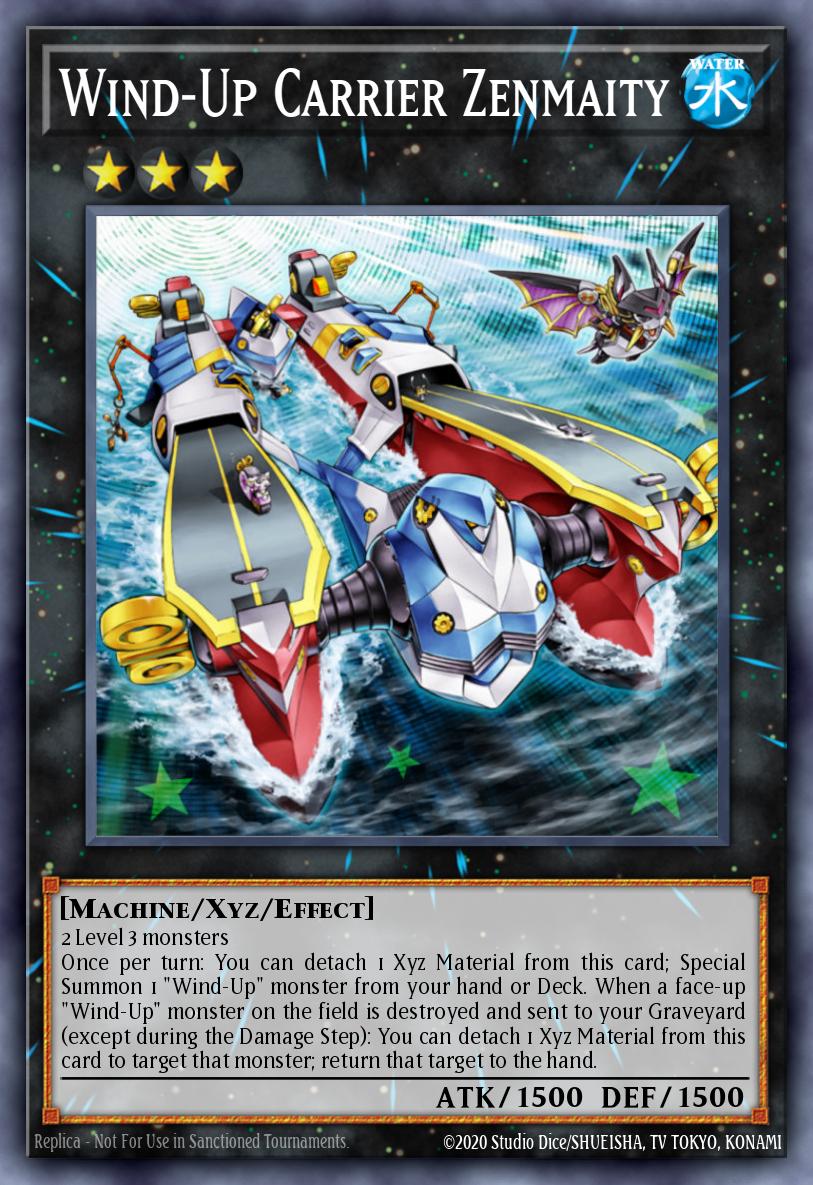 In August of 2011, Konami introduced the "Wind-Up" archetype in Generation Force. In the beginning, there wasn't much excitement for the deck. The cards released at the time did not seem to have an end goal. The majority of the card effects were, at best, mediocre, and all had a once-per-turn restriction. Of the 6 monsters initially released, the best seemed to be Wind-Up Magician, simply because of the fact that it helped the deck "swarm" the field.
In August of 2011, Konami introduced the "Wind-Up" archetype in Generation Force. In the beginning, there wasn't much excitement for the deck. The cards released at the time did not seem to have an end goal. The majority of the card effects were, at best, mediocre, and all had a once-per-turn restriction. Of the 6 monsters initially released, the best seemed to be Wind-Up Magician, simply because of the fact that it helped the deck "swarm" the field.The next wave of support came in November of 2011 with Photon Shockwave. More Wind-Up monsters were released, and again, most of them were useless effects. The most interesting one was Wind-Up Hunter, which tributes another Wind-Up to discard a random card from the opponent's hand. Even then, the once-per-turn restriction on its effect prevented it from fulfilling its maximum potential.
From 0 to 100 (Or, 5 to 0)
This all changed in January of 2012 with the release of Order of Chaos, making the deck a much bigger threat. Prior to this set, most of the Wind-Up monsters had effects that changed levels and ATK values. There was very little recursion and summoning from the deck was restricted to Wind-Up Magician. 3 key monsters were introduced in this set: Wind-Up Rat, Wind-Up Shark, and most importantly, Wind-Up Carrier Zenmaity. With an opening hand of just Wind-Up Shark and Wind-Up Magician, it was possible to make the opponent send their entire opening hand to the GY. Outside of Maxx "C" or Effect Veiler, there was no real way to counteract the loop. Or was there?
The Search Begins...
People found issue with the looping of Zenmaity and Hunter, because they found themselves without a hand very often. It was no fun having to start your game with just one card (not so different today, is it?). Luckily for the opponent, they had an ace up their sleeve. Players reached very far back in Yugioh's history and dug up a little cat released in Magician's Force in 2003.
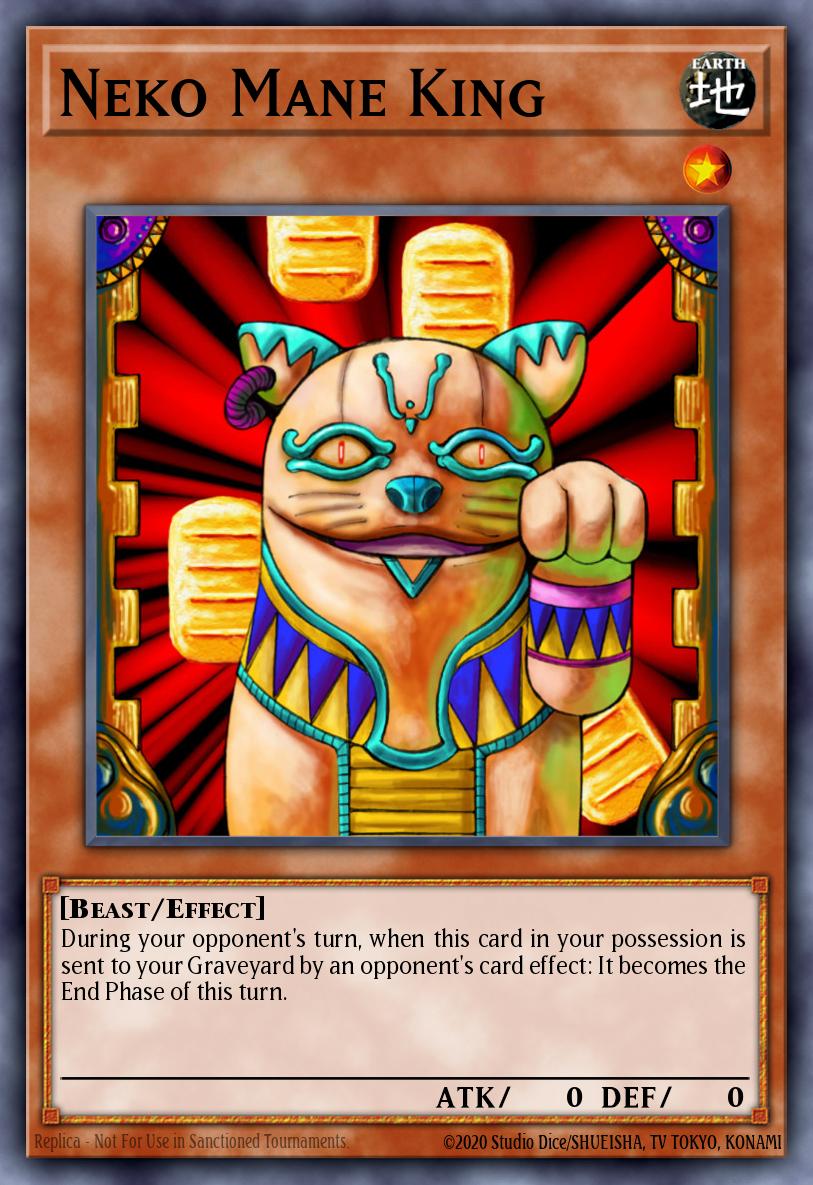
We've "CAT" the Answer!
Neko Mane King is an effect monster that, when discarded from the player's hand during the opponent's turn, makes it the end phase of the current turn. It was basically a perfectly imperfect counter to the Wind-Up strategy. Imagine your opponent happily starting off their combo, and then they get to their first Hunter. If Neko Mane King is the first card they hit, their turn immediately ends with close to no setup. This card quickly became prevalent in side decks for this format (it had also been used in the past to counter Dark Worlds).
The only issue with this card was something that was not its own fault. Because Wind-Up Hunter randomly discards the card from the opponent's hand, there is only a chance that the effect of Neko Mane King will resolve. Even then, some felt it was better to have a chance at winning the duel than just laying down and having all you care about taken away.
Side Out Djinn?
In January of 2015, Secrets of Eternity introduced the Nekroz archetype. Comprised of only three members, no one really paid any attention. Dance Princess of the Nekroz served as an okay form of recursion, and Nekroz of Gungnir was not useful due to the lack of members. Nekroz Cycle, on the other hand, was unique; it was the first ritual spell of its kind to summon from the GY.
In February of 2015, the Nekroz deck exploded into the competitive scene. The booster set The Secret Forces introduced the rest of the archetype, and it greatly increased the power and consistency of the deck. Each of the monsters either had powerful effects that pulled the duel in the player's favor, or had the ability to search out everything necessary. The ritual spell Nekroz Kaleidoscope was even more unique that its Cycle counterpart because it was able to send monsters from the Extra Deck for material.
But by far, the worst part of the deck was a card that didn't even belong to the archetype. Djinn Releaser of Rituals is an effect monster that, when used as a material for a Ritual summon, prevents the opponent from special summoning monsters. Players had a high likelihood of stopping their opponent from making plays, especially in a format that was dominated by the Nekroz deck. Combine that with the powerful Nekroz monster effects, and the game was basically guaranteed.
Or so one would think.
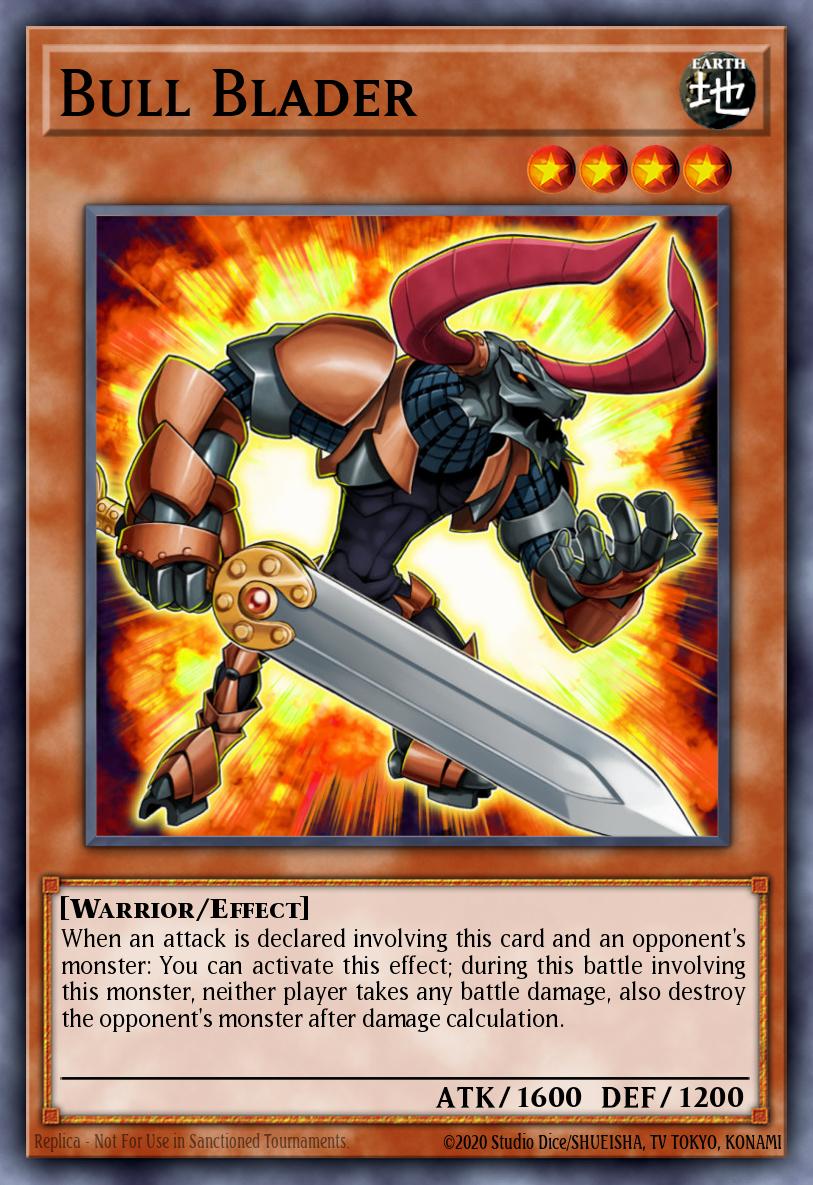
It Is Time to Grab the Bull by its Horns!
With the rise of the "Djinn Lock," people began to side Bull Blader to get rid of the Djinn-ified monster. For all intents and purposes, it was actually not a bad choice. It was a Warrior-type monster with the effect that, when battling, immediately destroys the monster it was attacking without performing damage calculation. Not only that, but with Reinforcement of the Army at 3, it was extremely searchable in any deck. Konami first released it in November 2012 in Abyss Rising, nearly 3 years before they revealed Nekroz. Despite this, it was still very useful.
How "Farfa" back can we go?
Around the same time that Nekroz were first introduced, there was another counter to the Djinn strategy. Konami introduced a new support card for the Burning Abyss archetype called Farfa. Players began to use a small "Burning Abyss" engine in their side deck. This engine consisted of 2-3 Armageddon Knight (released in 2008), and 1-2 Farfa, Malebranche of the Burning Abyss. By Normal Summoning Armageddon Knight, you send Farfa to the GY, and banish the offending Ritual monster.
Players used one of these two "tech choices," but they stopped when Konami banned Djinn in July of 2015. Keeping with tradition, the players looked to the past to find tech choices to deal with the present.
All According to Your Zoodiac Sign
Raging Tempest, released in February of 2017, changed how XYZ summoning worked. In the past, XYZ monsters required at least 2 materials to summon. This time, the Zoodiac XYZ monsters only required one monster in order to be overlaid. Along with this frightening consistency, the Zoodiac deck was able to utilize powerful combo cards like Elder Entity Norden and Zoodiac Barrage to build up impressive boards. It was at this time that players began to use unorthodox methods to counteract the deck.
I "C" that You Have a Nice Board, There...
Immediately, the first thing that came to mind in order to counteract the nearly infinite XYZ summons was something that had already been used in the past. Because Maxx "C" was already being used by nearly everyone, players had to turn to its siblings. Best known for the cockroach that gives you cards when the opponent special summons, the "C" archetype also had a few other members. Confronting the "C" served no purpose, and in fact gave the opponent another monster on board. Shiny Black "C" affected Synchro Monsters, which weren't even the problem at this point.
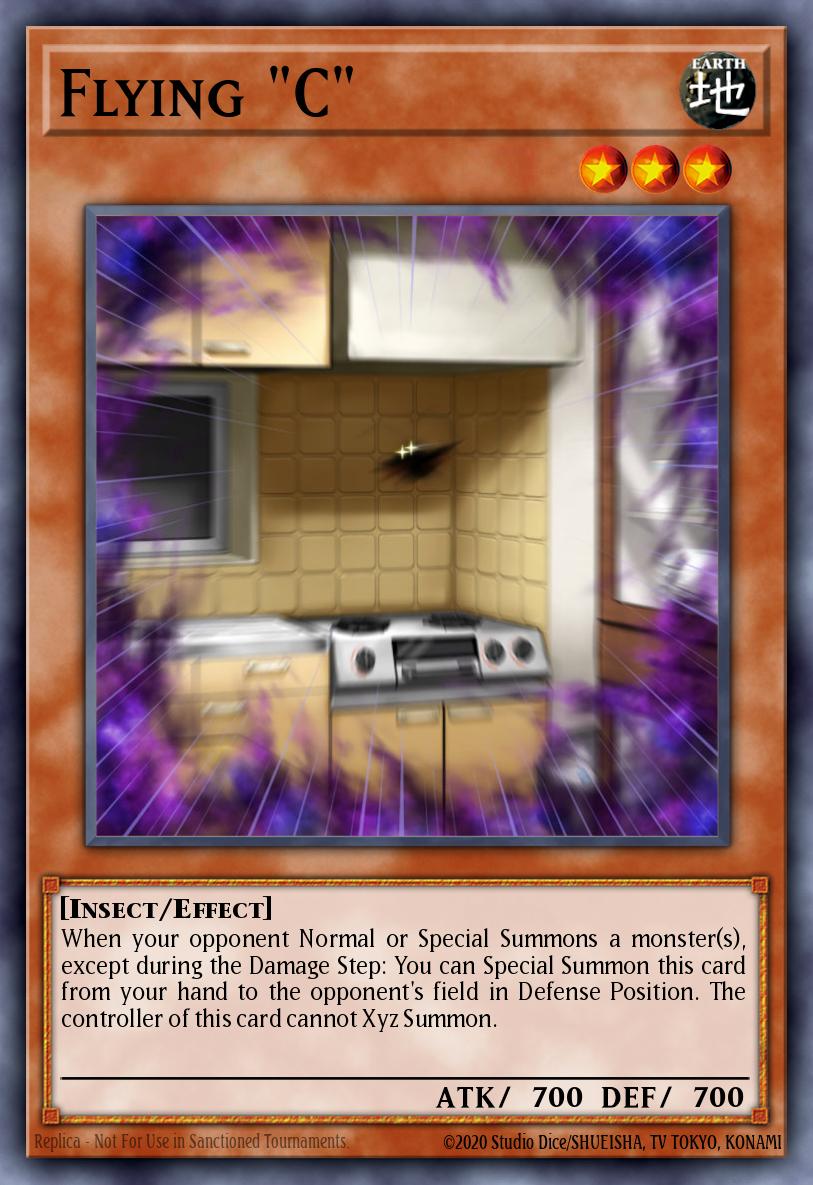 If you fight them...
If you fight them...
The most obvious choice to counteract Zoodiacs was adding a Flying "C" to the side deck. You would just slap the roach down onto your opponent's field whenever they would summon a monster, and they were locked out of XYZ summoning. The only problem was that there were still ways of getting rid of it. If you gave it to them too soon, they could simply destroy it with Zoodiac Barrage. Zoodiac players also tended to use removal or effect negation in the Main Deck. Combined, these issues acted as a Raid can against the roaches.
They might fight back!
When Konami Semi-limited Zoodiac Ratpier in the March 2017 banlist, the Zoodiac playstyle changed very much. Prior to this, the deck focused on bringing out Zoodiac Drident with a bit of backrow. Now, the deck began to focus on accruing as much advantage as humanly possible in a turn. Players called it the "Fusion Sub Zoo" combo.
Players would summon Zoodiac Broadbull multiple times per turn to search out Lunalight Black Sheep, which in turn searched out Fusion Substitute. After summoning a Daigusto Emeral to recycle some monsters in the GY (and draw a card), the players would summon Elder Entity Norden with their Fusion Substitute. They make another Broadbull, search another Black Sheep, and search another Fusion Sub.
They recycle the Norden in the GY with Fusion Substitute (and draw a card), and the whole process would be repeated again. At the end of the combo, the player can have between a +6 to a +8 in terms of card advantage.
To try and counteract this, players began to side and use Retaliating "C" in response to the Fusion Substitute. When summoned, both players banish all cards sent to the GY instead. It was basically a Macro Cosmos on legs. At this point, the opponent would be forced to deal with the monster, or else they would be stuck at an impasse. However, if they were to try and destroy it, the player who controls it would be able to add a Maxx "C" to their hand. In this case, players tried to deal with it by negating its effects with cards like Forbidden Chalice.
Either one of these cards were good cards to use against Zoo, and as such, players extensively used them in these formats.
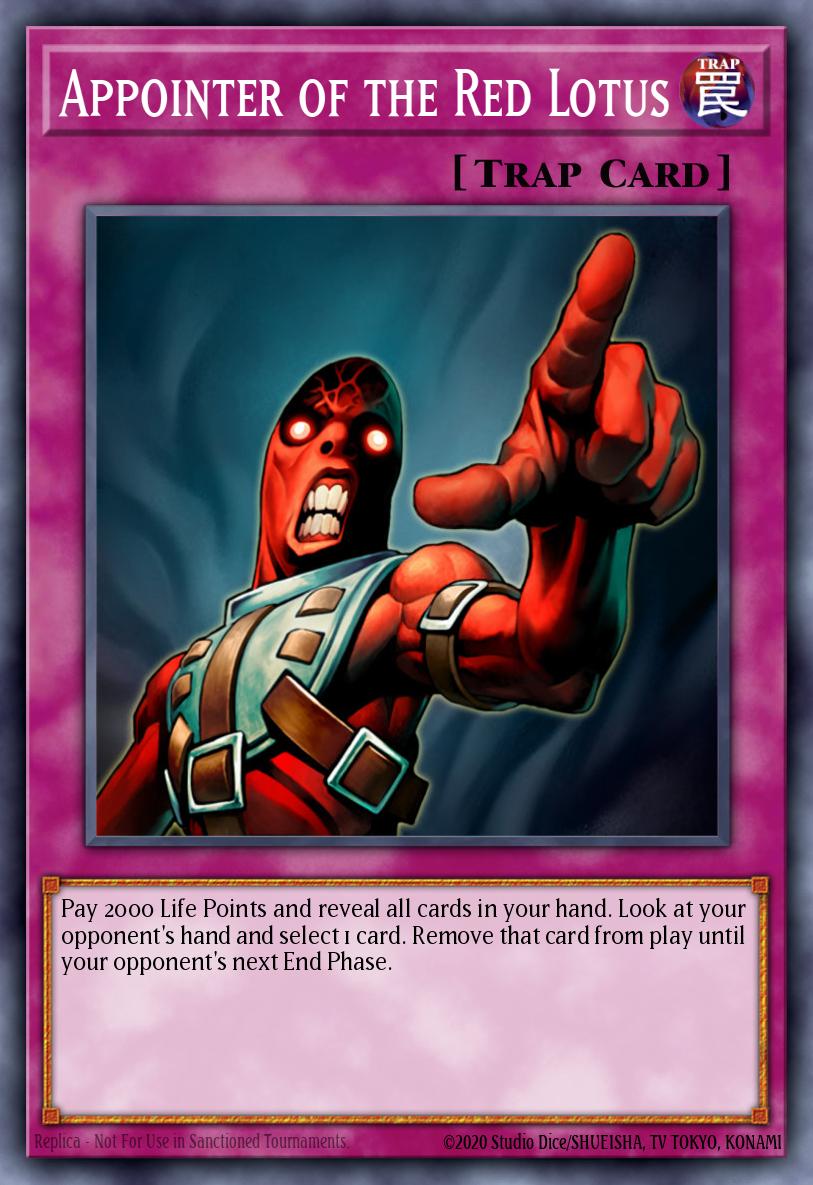 Why Are You Pointing at Me?
Why Are You Pointing at Me?
Another side deck tech option that was not nearly as popular was the trap Appointer of the Red Lotus. By paying 2000 LP, one is able to look at the opponent's hand and banish a card from it until the End Phase. Obviously, knowing what the opponent's hand is like is good information to have in any scenario, and being able to disrupt the opponent by taking cards out of their hand is powerful.
However, this card never really took off; the Zoodiac engine was too consistent. Hands could open with any combination of combo starters and extenders and sometimes taking away one card would not be enough to stop it. Not only that, but paying 2000 LP to activate it is pretty steep, considering the lackluster effect. Those LP can be better used for the activation of Solemn traps or My Body As a Shield to protect your field from that pesky Interrupted Kaiju Slumber or Drident.
Sleeper with Last Resort? I sleep, and so will you.
With the release of SPYRAL Double Helix in Circuit Break on October of 2017, the SPYRAL "Tier 0" meta was established. Ending boards including a triple-linked Tri-Gate Wizard and a SPYRAL Sleeper. These boards were very difficult to get over, and it was extremely consistent.
The opponent being able to have a quick-play destroy 2 per turn is extremely powerful. Not only that, but it's protected by SPYRAL GEAR - Last Resort, which is protected by SPYRAL Resort. The only way to get rid of it is to remove both Resort and Last Resort first. However, the opponent could respond at any time with Sleeper's effect, messing up any potential combos.
Konami had released a simple solution to this problem 3 years prior.
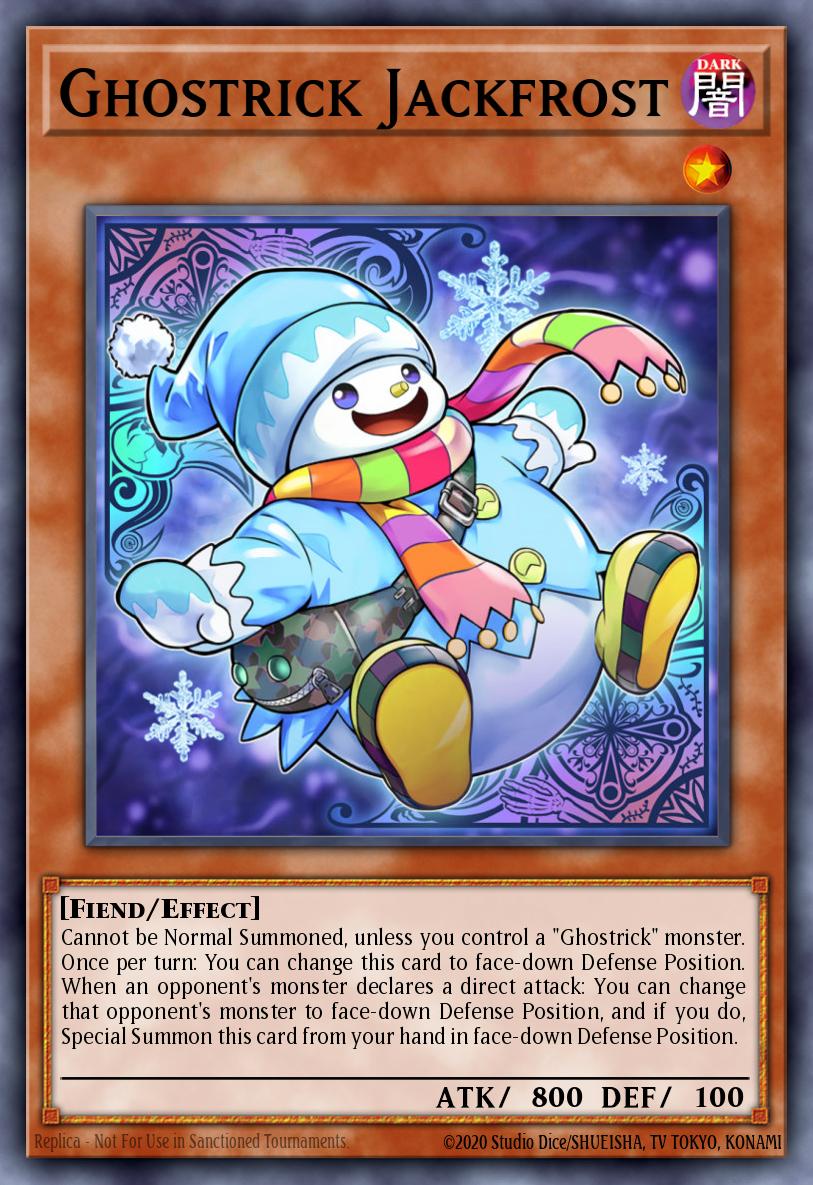 Legacy of the Valiant, released in January of 2014, brought support to the Ghostrick archetype. This deck focused around flip monsters and forcibly changing the battle positions of opponent's monsters. It was here where we found an answer to the oppression brought by SPYRAL Sleeper: Ghostrick Jackfrost. When the opponent declares an attack, Ghostrick Jackfrost can special summon itself in face-down defense position. Not only that, but it turns the attacking monster into face-down defense position as well. The best part?
Legacy of the Valiant, released in January of 2014, brought support to the Ghostrick archetype. This deck focused around flip monsters and forcibly changing the battle positions of opponent's monsters. It was here where we found an answer to the oppression brought by SPYRAL Sleeper: Ghostrick Jackfrost. When the opponent declares an attack, Ghostrick Jackfrost can special summon itself in face-down defense position. Not only that, but it turns the attacking monster into face-down defense position as well. The best part?It doesn't target.
In one card, there was an extremely effective way to deal with the oppressive nature of the "Sleeper lock." It works around the protection of both Resort and Last Resort, and helped mitigate damage from the attack. You just had to hope that they didn't make a Tri-Gate beforehand.
No Field Spells!
In May of 2017, Konami released Maximum Crisis. One card of interest in the set was the spell Set Rotation. It is a quick-play that sets 2 Field Spells on either side of the field. As long as any of those field spells remain face-down, neither player can activate a new one on top of them.
Usually, this would not be a problem, but certain field spells require a search when they are activated. If there are no valid targets in the deck, then one cannot activate it. This allowed Set Rotation to lock out the opponent's field zone. The two most common cards used were Oracle of Zefra and Gateway to Chaos. Oracle searches for a "Zefra" monster, and Gateway searches a "Black Luster Soldier" or "Gaia the Fierce Knight" monster.
Of the two, Gateway was the better target. Zefra decks were popular in high-tier events, so you might accidentally give your opponent a combo piece. On the other hand, almost no one played a Black Luster Soldier deck, so there was very little danger in giving your opponent that Gateway to Chaos.
Luckily, there is a valid search target that most decks can easily use. Lord Gaia the Fierce Knight is a level 7 monster that can be Special Summoned when the player controlled no monsters. This allows the player to escape the Set Rotation lock if they need to depend on their own field spells. However, as with most of the previous side deck options, it was not really worth running. Players only used it as a means to an end, with no combo advancement. With this in mind, the idea of adding what is effectively a "Garnet" for an opponent's card did not really take off. It is important to note, however, that in the much longer OCG SPYRAL format, running search targets to out the lock was extremely popular due to the extreme advantage gained from a SPYRAL combo far outweighing the disadvantage of running an essentially blank card.
A Short Intermission
Before we conclude this article, we should take a look at the trends seen with these previous cards. People used them to counteract an extremely specific scenario. They incorporated these cards into their side decks, but never kept them as a main-deck choice. In a lot of these cases, the idea never really took off. This last card I will be discussing seems to have escaped the curse of the spicy techs that plagued these cards.
Wait, Neo-Spacians are Actually Meta-Relevant?
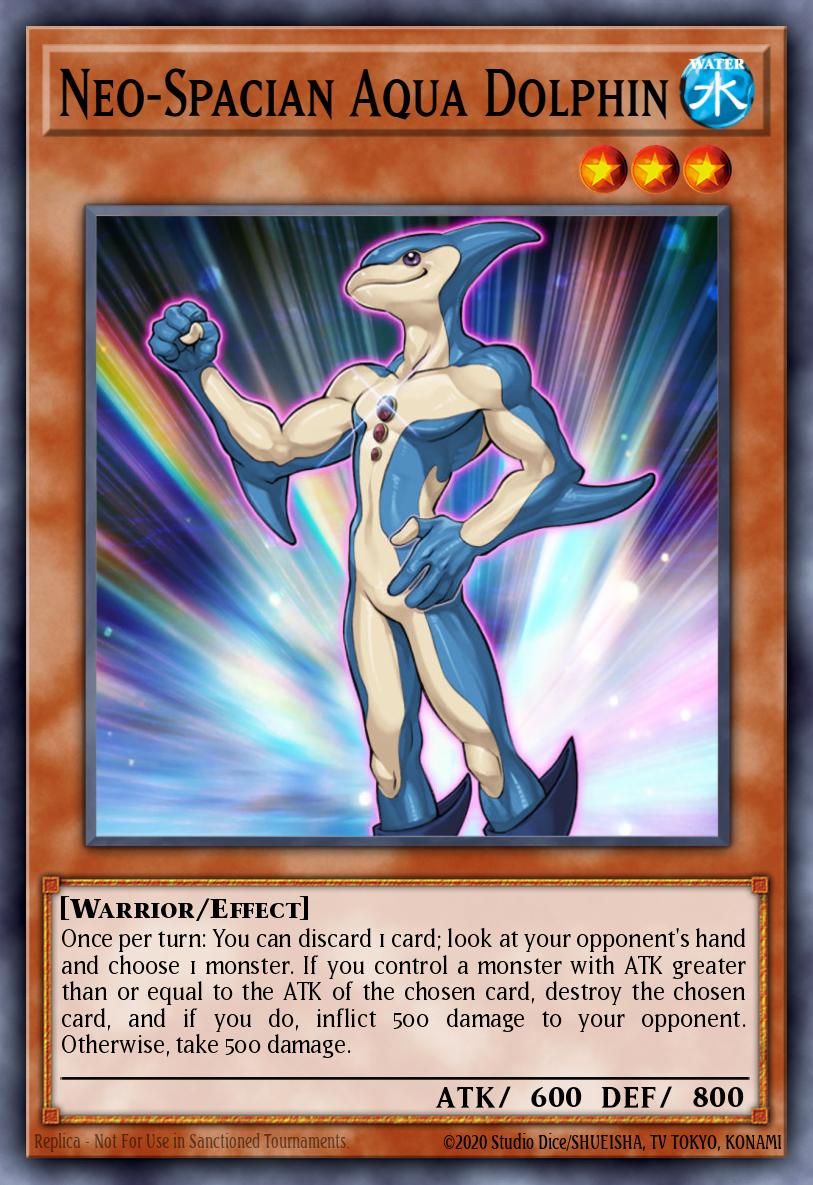 With the release of the Knightmare Link monsters and Isolde, Two Tales of the Noble Knights, the Gouki Extra-Link was made possible. Just like SPYRAL, it was an extremely consistent deck. After Konami banned Knightmare Goblin and M-X-Saber Invoker, the playstyle of the deck changed.
With the release of the Knightmare Link monsters and Isolde, Two Tales of the Noble Knights, the Gouki Extra-Link was made possible. Just like SPYRAL, it was an extremely consistent deck. After Konami banned Knightmare Goblin and M-X-Saber Invoker, the playstyle of the deck changed.In Battles of Legend: Relentless Revenge, Topologic Gumblar Dragon was released. It is a Link-4 that has two effects. When either player Special Summons a monster to a linked zone, they both discard up to 2 cards. Then, if it is in an Extra Link, you can make your opponent discard 2 cards from their hand. With this card, these Gouki (now "Dark Warrior") decks were able to pitch 4 cards from the opponent's hand consistently. The can also make an extra link on top of that.
But, the opponent still had 2 cards left in their hand.
Apparently, this was unacceptable, so these players began to look for other ways to do this combo. Delinquent Duo is banned, and so are The Forceful Sentry and Confiscation. With these cards unavailable, what can be used?
A Hero "Saves" the Day!
In October of 2006, Konami released Power of the Duelist. Konami introduced the Neo-Spacian archetype in this set, but none of them were very good. The Fusion monsters return to the Extra Deck during the End Phase, and the main-deck monsters were very lackluster. At least, most of them were.
Neo-Spacian Aqua Dolphin has an effect where, by discarding a card from your hand, it allowed one to look at the opponent's hand and destroy a monster with ATK lower than any you control. This was perfect for the Gumblar hand loop. Summon it off of the Isolde, use its effect, then link it away for the rest of the combo. Not only that, but it is usually possible to bring it out again later in the combo to send another card from the opponent's hand. Furthermore, it could snipe hand traps early in the combo to ensure a safe Gumblar later. The release of Neo-Space Connector in the Soul Fusion special edition made it even easier to get Dolphin out twice. What started out as a "spicy tech" in a few warrior decks quickly became an actual staple in the main.
Conclusion
As the Yu-Gi-Oh! meta has evolved over time, players have been finding ways to counteract it. In most cases, these ideas never take off, or if they do, they quickly disappear. This is likely due to being extremely specific and unable to be used outside of their specific niche. On the other hand, some of these techs are very good and have been fully integrated into the playstyle of the deck. It will be interesting to see how players will change future decks, and how prepared everyone will be for those changes.




